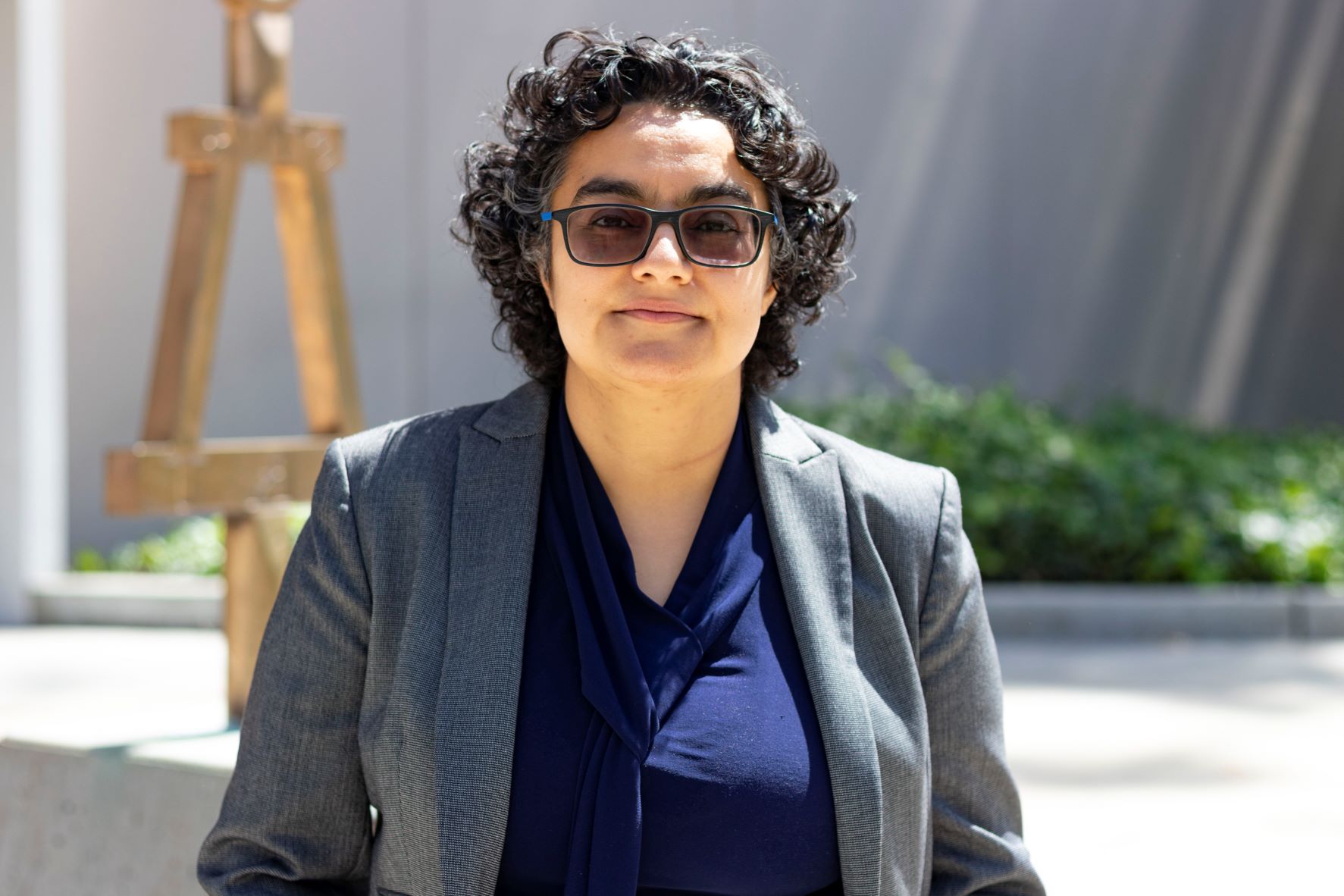Aerospace Engineering Associate Professor Endeavors to Combat and Harness Energy Using Entropy-Based Formulation with NSF-Funded Project
Nothing is certain expected death, taxes and entropy increasing.
Entropy measures disorder and describes why things become increasingly disordered over time. The second law of thermodynamics says entropy always increases with time, explaining why certain processes are irreversible. For example, open a bottle of soda and gas molecules will disperse into the room, but it won’t compress back into the bottle. Entropy plays a part in every aspect of life.
Entropy has long been used in statistical mechanics and in thermodynamics, but Zahra Sotoudeh, Ph.D., aerospace engineering associate professor, has been working on adapting the concept of entropy to study energy transfer in structures.
“Entropy always increases. Mathematically, it measures disorder, so we are developing a new method to understand energy transfer using entropy,” Sotoudeh says, “Sometimes you want to redirect energy. Other times, you may want to harvest energy. It depends on the application. Our novel entropy approach will predict the path of energy transfer in high-frequency vibrations.”

A practical example she brings up is protecting sensitive sensors of air vehicles from structural vibrations caused by engines, turbines, turbulence and so on. In this case, you would want to change the path of energy transfer to ensure the sensitive sensors are safe from vibration. In other applications, you may want to transfer more energy into devices that can convert vibrations into energy.
Sotoudeh’s has invested years in this domain. The National Science Foundation (NSF) has found it worthwhile too—they have given her a two-year, $199,801 grant to investigate and develop a new theoretical framework with practical implications that will benefit all kinds of engineering structures.
By adapting the concept of entropy from statistical mechanics, Sotoudeh will improve statistical energy analysis, a traditional technique for study vibration, for more realistic applications. This model should be effective in high-frequency vibrations, which is the primary pain point that Sotoudeh’s aiming to solve.
“If the vibrational frequency is high, the traditional methods are either inaccurate or computationally costly,” says Sotoudeh. “This research is specific to nonlinear high-frequency vibrations and developing a novel approach to study this.”
Of course, it is all theory. The math says it should work, but Sotoudeh will be using the resources from the NSF grant to fund practical experiments, like simulating vibration on scaled down aircraft wing models, to put the theory into practice. She is also spending a portion of the grant on student research stipends, providing students research opportunities and a job.
“When you compensate students, they’re better able to focus on the research,” says Sotoudeh. “They don’t have to support their research work with a part-time job elsewhere.”
She hopes too that her work encourages her peers to seek out NSF and other national grants.
“Some assume getting NSF funding is too hard, but there’s opportunity are out there,” says Sotoudeh. “Students also take pride in working NSF projects.”